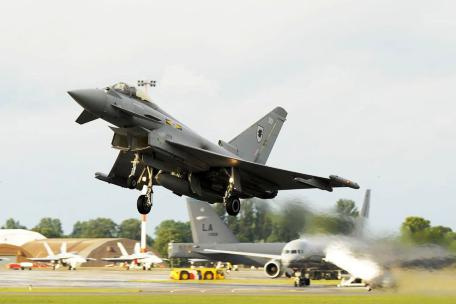Saudis Seeking the Upper Hand in the Region

IRD: Thanks to its extensive oil reserves and high oil revenue as well as earnings from pilgrims, Saudi Arabia is an affluent country. Since the 1970s, when oil prices tripled, Saudis greatly increased their military spending by buying advanced weapons from the UK, France and the US-- especially during the Nixon era and the early seventies, when Iran and Saudi Arabia were assigned the role of stewardship within the region by the US. Nixon’s policy meant Iran played a greater military role in the region while Saudi Arabia took on financial responsibilities; this way the Saudis had to take part financially in the cost of this policy.
Saudi strategy to strengthen its military led to a gradual increase in purchasing weapons from the West, and as the county’s income rose so did its military spending. The country has maintained its place as one of the top buyers of military equipment, before and after the Cold War. This approach is also in line with Saudi policies to both demonstrate their power in the region and to maintain influence in US and Western politics.
Buy selling arms to Saudi Arabia; the US has the following objectives:
1) American dollars spent on oil will return back to the US to ensure a balanced economy
2) To sell arms to Saudi Arabia
3) Most importantly, the US guarantees Saudi dependency. Contracts signed between the countries require Saudi Arabia to employ military advisers for training and tactical purposes. These advisers tend to stay in Saudi for years and are kept on the payroll of the Saudi government. Hence, eventually the relationship between the dominant country and the dominated state is sustained.
Hence, these contracts have many benefits for the manufacturing countries, and the new arms contract between the US and Saudi Arabia is no exception. Perhaps the $60 billion contract is the largest one yet that a 3rd world country has ever signed. With this hefty new contract, Saudi Arabia has received the title of being one of the biggest buyers of arms in the world, allowing it to brag regarding its military capabilities.
Despite the Saudis’ high military capability, the country has failed to show its army’s ability. This is because Western countries and arms manufacturers have not provided Saudi with the necessary technology in order to maintain Saudi’s dependency on the West. As a result, military officers of the manufacturer states remain in Saudi for many years, renewing contracts and receive hefty salaries. Their task is not to provide Saudi with the necessary technology and capability, but to ensure the country’s prolonged dependency on Western powers.
Saudi’s intentions in buying arms are:
1) The main objective is to become a powerful country in the region in order to gain the upper hand over Iran and other regional countries.
2) Due to Iran’s military achievements in recent years, it is natural for Saudi Arabia and other regional countries to feel concerned. As a result, their recent purchases are a reaction to Iran’s arms capabilities.
Regional Arms Rivalry
Looking at the poles, since the 1970s, Saudi has maintained it place for being the biggest purchaser of arms in the region followed by Oman and the Emirates. Other countries in the Persian Gulf and the Gulf Cooperation Council members are also on the list. Furthermore, there have been some confrontations between Saudi Arabia and Qatar lately; therefore competition also exists amongst other countries in the region. Compared to Saudi, Iran’s last year’s $4 billion spending on arms is insignificant.

